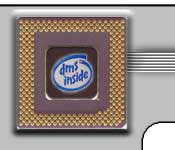|
Sensor technologies for monitoring metabolic activity in single cells - Part I: Optical methods
Rachel Yotter, Linda Lee, and Denise Wilson

A review of optical, chemical, and biological sensors to detect metabolic activity at the single-cell level is presented in the context of
the development of lab-on-a-chip research instrumentation. The sensors reviewed include optical sensors, at both research and commercial
levels, that can optically detect intracellular metabolites including adenosine triphosphate, nicotinamide-adenine dinucleotide, reduced
flavin adenine dinucleotide, and other metabolites, including oxygen, carbon dioxide, and glucose. Methods to optically detect pH changes
which are a general indicator of activity in extracellular space are also briefly reviewed. Performance metrics such as sensitivity, sensor
size, drift, time response, and sensing range are included when available. Highly suitable optical sensor technologies for monitoring
cellular metabolic activity include luminescent (fluorescent, phosphorescent, and chemiluminescent) and colorimetric optical probes.
Different approaches to extracting luminescent and colorimetric information are reviewed, including benchtop techniques, fiber-optic
approaches, and the use of probes encapsulated by biologically localized embedding. A brief discussion of alternate optical sensor
technologies, such as surface plasmon resonance and infrared absorption spectroscopy, is also presented.
|



